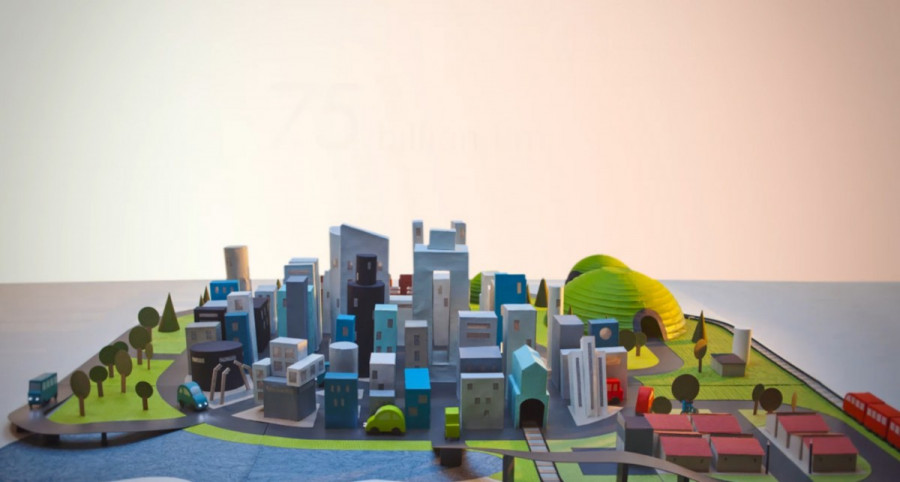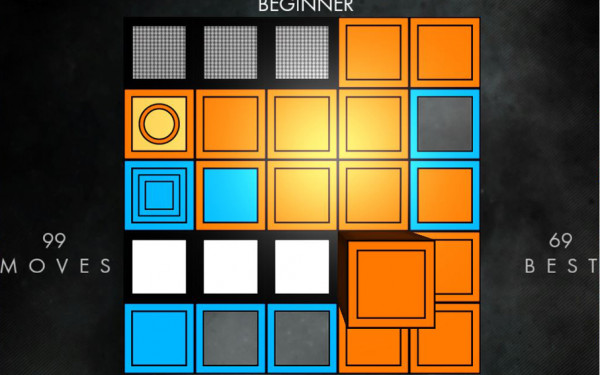Deconstructing the Business of Creativity
Montreal’s Departement Makes Art Profitable
Creative studio Departement takes the term ‘multidisciplinary’ to unfathomable new heights.
Their body of work spans across a dizzying array of genres and is packed with animation, multi-touch projection, web documentary, branding, interactive museum exhibits and mobile applications.
“It started off as a bunch of freelancers working together and slowly we realized that we always work together so we might as well start a company,” said Elias Zananiri, an interactive and mobile developer and partner in Departement.
The group of freelancers that joined forces in 2007 to form Departement has grown to a group of five partners: Philippe Archontakis, Nicolas S. Roy, Hugues Bruyere, Thibaut Duverneix and Zananiri.
They maintain a staff of one full-time employee and four regular contractors. But the growth of a creative business is not without struggle, said Zananiri.
“We all had this fear at first that we would never get another contract. So every time stuff came in, we would just take it. But now it’s steady work. We hardly ever have to do pitches or anything. People hear about us, and they want to work with us,” he said.
The names that want to work with them carry a lot of clout and money, too. Working with the National Film Board of Canada, the Canadian military and the Light and Sound Festival in the Netherlands, these Concordia graduates are certainly carving out a space for themselves in the design world.
Zananiri recalls one of their first projects with the NFB, a film entitled Holy Mountain that garnered their firm some recognition. It’s a stunningly designed interactive web documentary that lets the users play with a 3-D model of Montreal’s Mount Royal and click on topographical features for more information.
“The [NFB] commissioned the pieces and then people who visited the website had a chance to add a video, or an image or to call a phone number and leave a sound bite. Those were available on the site after. That was our first major release,” said Zananiri.
This is just one example of how Departement is using the multi-disciplined talents of its members to innovate, but they are perhaps a step behind when it comes to innovation in business. Because how naturally the partnership formed, Zananiri said there they are only starting to the approach the point where they need a business plan.
“It happened sort of organically, now that we’re actually starting to get employees, we’re thinking of maybe having some sort of a business plan, but it hasn’t appeared so far,” said Zananiri.
“What we are trying to do is show what the company can do because we all have our different spheres and that’s what we think make Departement so unique.”
Toting the studio as a one-stop shop for everything, Zananiri says that the studio is able to see projects through all the way from pre to post-production and everything in between.
Zananiri says that staying small means that they have the advantage of having flexible pricing. If they are excited about a project or a client, they are able to put in that extra time the larger studios would have to charge for.
With 20 projects already under their belt in 2012, expansion is becoming inevitable—but increasing in size doesn’t necessarily mean entering the creative pond with bigger fish.
Zananiri said that the few small multimedia studios in Montreal who do work on par with theirs provide a friendly competition that drives creativity. While they have all worked together on past projects, each studio comes with its own specialty—Departement’s are web documentaries, large interactive websites and projections.
Projections have gotten the studio the most attention in Montreal. Their full wall exhibit Locomotive, which featured videos of writhing, interacting body parts, was displayed in heavily trafficked Espace culturel Georges-Émile-Lapalme at Place des Arts. The exhibition was almost pulled when some complained that it was too racy for public viewing.
Departement has new projects in the works—including one that tells the story of how the lives of homeless people change in ways small and large when they are given an apartment.



_600_832_s.png)


_600_375_90_s_c1.jpg)
_600_375_90_s_c1.jpg)
